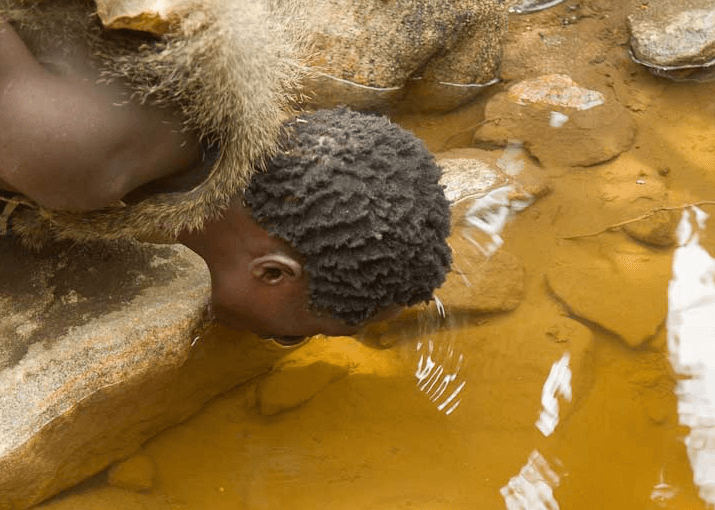

(Photo from Long Beach Animal Hospital, LBAH.com.)
After a nice rain, would you kneel on the ground and drink from the water that pools in your driveway or backyard? On a five-mile hike in the woods, should you bend down and drink from the river or stream, even the puddle of water pooled in tire tracks on a muddy path?
This is a speculative piece, something to ponder as we get closer and closer to obtaining better answers on how to rebuild a healthier intestinal microbiome after having it decimated by factors common in modern life. Who, after all, has not taken at least one, if not ten, courses of antibiotics, not eaten ice cream thickened with polysorbate 80, not taken an anti-inflammatory drug like naproxen or ibuprofen, not been prescribed a statin cholesterol drug that shifts microbiome composition to that of an obese type 2 diabetic, or endured long-term stress in your life? These and many other factors have disrupted the composition of microbes in our gastrointestinal (GI) tracts. We therefore take steps to rebuild what we believe to be a healthier microbiome, avoiding such disruptive factors, consume fermented foods, include prebiotic fibers and other factors that nourish intestinal microbes, reimplanting keystone species such as L. reuteri, etc.
Shown above is a member of the Hadza tribe drinking water. The Hadza, along with other isolated populations such as the Yanomami in the Brazilian rainforest, live as modern hunter-gatherers and are largely unexposed to the factors that have disrupted the modern microbiome. The Hadza, like the other few remaining hunter-gatherer cultures, are being increasingly marginalized and being forced into more limited areas as agricultural land, industrialization, and urban centers expand, making it increasingly difficult to locate drinking water. But the Hadza and other primitive populations manage to drink water not from a tap, not filtered by their city nor a home water filtration system, but water just sitting in a puddle, hole, pond, lake, or stream. And they seem to do so with impunity.
You’ve likely also witnessed animals drinking from dirty puddles or standing water, dogs drinking from toilets. Yet they all seem to do just fine.
We, of course, cannot do this in our world. Not only is there contamination of the water by sewage, herbicide and pesticide runoff from agricultural and residential uses, but we would likely just get sick from the mix of microbes in the water. If you were to examine a sample of water taken from, say, a puddle of water in the forest, you would see that it’s teeming with bacteria, fungi, protozoa and other microscopic creatures. When people like the Hadza drink such water, they are ingesting a zoo of microbes.
Here’s a microscopic view of pond water (from the American Museum of Natural History):

What if we could drink water like that—would it make a difference in health? What if we could obtain quantities of water that had no herbicides, pesticides, or sewage, just the microbes you find in the wild? Would they help repopulate your microbiome, perhaps allowing it to inch closer to the very different microbiome composition of a hunter-gatherer?
I don’t have an answer, but I suspect that it would indeed be a healthy practice if we lived in a chemically cleaner world but could drink “dirty” water.


